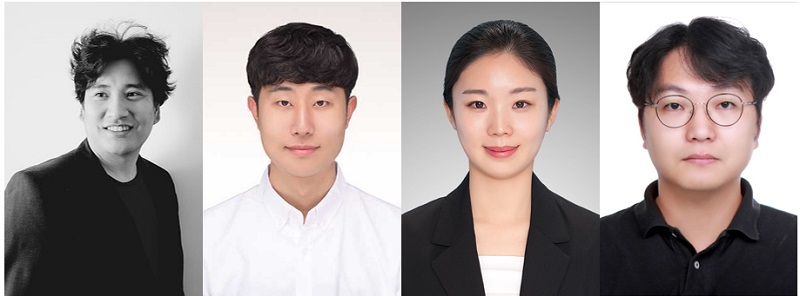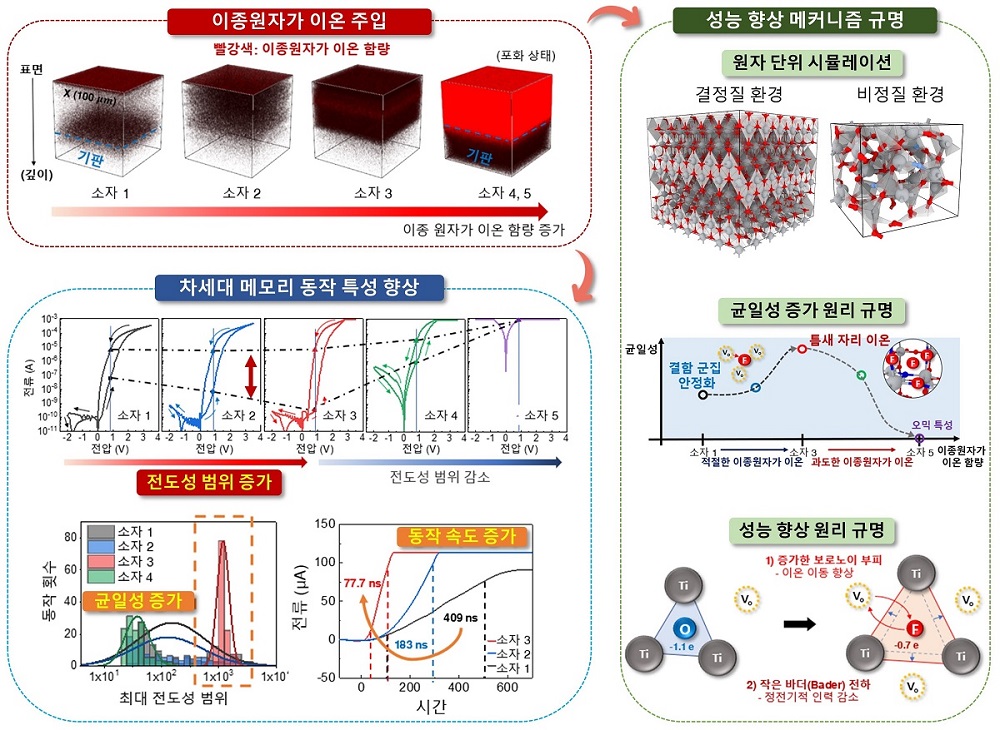Professor Shinhyun Choi’s Research Team solves the Reliability Issues of Next-Generation Neuromorphic Computing

Neuromorphic computing, which implements AI computation in hardware by mimicking the human brain, has recently garnered significant attention. Memristors (conductance-changing devices), used as unit elements in neuromorphic computing, boast advantages such as low power consumption, high integration, and efficiency.
However, issues with irregular device characteristics have posed reliability problems for large-scale neuromorphic computing systems.
Our research team has developed a technology to enhance reliability, potentially accelerating the commercialization of neuromorphic computing.
On June 21, professor Shin-Hyun Choi’s research team announced a collaborative study with Hanyang University researchers. The study developed a doping method using aliovalent ions* to improve the reliability and performance of next-generation memory devices.
*Aliovalent ion: An ion with a different valence (a measure of its ability to bond) compared to the original atom.
The joint research team identified that doping with aliovalent ions could enhance the uniformity and performance of devices by addressing the primary issue of irregular device characteristic changes in next-generation memory devices, confirmed through experiments and atomic-level simulations.

Figure 1. Results of aliovalent ion doping developed in this study, demonstrating the improvement effects and the material principles underpinning them
The team reported that the appropriate injection of aliovalent halide ions into the oxide layer could solve the irregular device reliability problem, thereby improving device performance. This method was experimentally confirmed to enhance the uniformity, speed, and performance of device operation.
Furthermore, atomic-level simulation analysis showed that the performance improvement effect of the device was consistent with the experimental results observed in both crystalline and amorphous environments. The study revealed that doped aliovalent ions attract nearby oxygen vacancies, enabling stable device operation, and expand the space near the ions, allowing faster device operation.
Professor Shinhyun Choi states, “The aliovalent ion doping method we developed significantly enhances the reliability and performance of neuromorphic devices. This can contribute to the commercialization of next-generation memristor-based neuromorphic computing and can be applied to various semiconductor devices using the principles we uncovered.”
This research, with Master’s student Jongmin Bae and Postdoctoral researcher Choa Kwon from Hanyang University as co-first authors, was published in the June issue of the international journal ‘Science Advances’ (Paper title: Tunable ion energy barrier modulation through aliovalent halide doping for reliable and dynamic memristive neuromorphic systems).
The study was supported by the National Research Foundation of Korea’s Advanced Device Source Proprietary Technology Development Program, the Advanced Materials PIM Device Program, the Young Researcher Program, the Nano Convergence Technology Institute Semiconductor Process-based Nano-Medical Device Development Project, and the Innovation Support Program of the National Supercomputing Center.